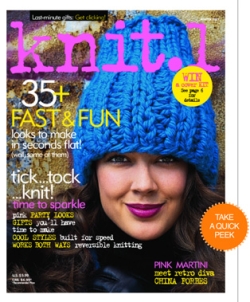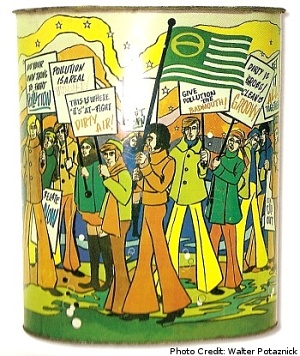Kid crafts can be SO CRAPPY!
And I’m not talking about the finished products. We all know that kid crafts ought to be process-oriented, not product focused. Kids are SUPPOSED to produce crappy-looking art. That’s how they grow their fine motor skills and creativity and practice decision-making.
It’s the supplies so often used in kid crafts that I have the biggest beef against. It’s junk like paper plates and plastic cups and glitter. Oh, the glitter!!!
Kids should also be encouraged to consider the methods that they use, the wants and needs that a project might fulfill, and the complete lifespan of the products that they create. It’s a tall order, sure, and even trickier to present in a kid-friendly, non-scary way. But that’s why these books are so special.
In the past year we’ve been blessed with lots of new kid-craft books that use eco-friendly methods and materials, and have the explicit intention of encouraging children and their caregivers to live green lifestyles. Here are my favorites!
Zero Waste Kids: Hands-on Projects and Activities to Reduce, Reuse, and Recycle, by Rob Greenfield
If you want to hand a kid one book that will help them understand the importance of living an eco-friendly life, and then empower them to do it, Zero Waste Kids is the book to hand them. Zero Waste Kids, by Rob Greenfield, explains the zero-waste lifestyle in an interesting, evocative, child-friendly way. It’s important to me that books aimed at children don’t use scare tactics or scary imagery to teach environmentalism. They also shouldn’t place too much personal responsibility for the planet’s ills at the feet of a child. I mean, you and I both know that it’s big corporations killing the planet, not plastic straws, even though we still shouldn’t use plastic straws, but that kind of nuance can be meaningless to a kid.
Zero Waste Kids does explain to kids why a zero-waste lifestyle is important, but the explanations lean towards hopeful and powerful rhetoric. The last two sections of the book are actually not even craft projects. Instead, they’re acts of activism, like starting a School Supply Reuse movement, and information gathering, like conducting a trash audit in one’s home. The book encourages kids to enact positive change within themselves, as well as with their peers, families, and communities.
The actual craft projects aren’t anything revolutionary. But Greenfield writes the instructions to children, and includes useful, colorful illustrations that should appeal to them. Like, I know you and I have seen a hundred different tutorials for seed balls and cloth napkins and windowsill gardens–but how many tutorials have our children seen? How many have been well-written especially to them? Kids will see these projects as all-new, and should be able to complete most of them independently.
The physical book itself is colorful and should be appealing to kids. The illustrations include a lot of diversity, including illustrating children of different abilities, a type of representation that’s often neglected. There are so many colorful designs decorating each page that this book, itself, could easily be upcycled into the pinatas, seed papers, and other projects included in the book.
P.S.–We Made This!: Super Fun Crafts That Grow Smarter + Happier Kids!, by Erica Domesek
Building by hand and imaginative play are crucial practices to, yes, grow smarter and happier kids. It can be hard to help kids get started, though, hard to encourage them when you can’t, yourself, think of any cool ideas or projects to inspire them. P.S.–We Made This!, by Erica Domesek, serves as a sort of clearinghouse of creative, imaginative kid crafts to solve that problem.
There are a LOT of projects in this book. At first you might feel overwhelmed by the options, or you might look at a few projects and think, “Meh, I/my kids wouldn’t like that one.” The trick is to flip through the book–or, better yet, have a kid flip through the book!–and find something that looks appealing to start with. Does a kid love pretend cooking and play food? Make the Brick Oven Pizza, upcycled from a corrugated cardboard box and some colorful papers. A kid who loves dress-up will love making the Butterfly Fairy Wings from the same materials. Add some toilet paper tubes and paint, and you can make the Magic Castle that’s the perfect size for Playmobil figures and other small world play.
Each project in the book comes coded with various educational “takeaways,” so you can see the benefits that kids gain from the hands-on activity. Mind you, I’m of the mindset that a kid happily immersed in any kind of hands-on activity doesn’t need more of a takeaway than that. But it IS interesting to notice the specific STEM, problem-solving, creativity, small-motor, and social-emotional skills inherent in children’s play.
10-Minute Nature Projects, by Elsie Olson
The 10-Minute Makers series is a staple of public and school libraries everywhere. Each of these short, colorful books is written to children. Each includes a handful of quick, simple crafts that most kids can complete independently. Scout troop leaders and day camp counselors LOVE them!
10-Minute Nature Projects, by Elsie Olson, makes crafting with natural materials just as quick and simple as any of the other books in the series. My favorite project is Frozen in Nature, which shows kids how to freeze natural materials and a twine hanger into ice decorations. This, in particular, is such a great project because kids can do it year-round with any available materials. They’ll make new discoveries depending on the season. How quickly will their ice decoration melt in the summer? How long will it last in the winter?
Some projects do call for plastic materials, so you may have to make substitutions. The Shell Buddies, for instance, are super cute, but the illustrated finished products all include pipe cleaners, googly eyes, plastic gems, etc. And the Rock Constellations, which otherwise are fun and educational and creative, call for my nemesis… GLITTER!!! Kids would have just as much fun painting the rocks or simply thoughtfully choosing special rocks for their constellations, and construction paper, cardboard, and popsicle sticks make shell friends that are just as cute. I do make an exception for googly eyes, however–googly eyes are crucial!
Create with Cardboard, by Marcy Morin and Heidi E. Thompson
With kids, you don’t always need a big explanation of how to live a green lifestyle or why you should use eco-friendly craft supplies–you just need to do it! Create with Cardboard, by Marcy Morin and Heidi E. Thompson, doesn’t spend a ton of time talking about reuse, upcycling, and recycling. Instead, it offers tutorials that do reuse and upcycle cardboard into projects kids will enjoy making and using.
My favorite projects in Create with Cardboard are interesting geometry manipulations masquerading as desk organizers and ornaments. Once kids have mastered the open triangle construction, they can make anything from tiny versions to use as building blocks to giant versions that could become a real-life cat palace… or giant building blocks! The paperboard planets, as well, could also be decorative lanterns if you add LED string lights. Or kids could make them small, using upcycled magazine pages, and turn them into Christmas tree decorations or homemade greeting card embellishments.
These books are my personal favorites from the past year, but there are a ton of kid craft books, both recent and old, that have awesome, kid-friendly, eco-friendly craft projects in them. Comment to let me know your favorites!











